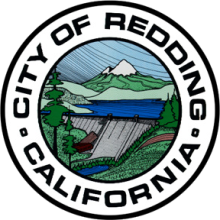
Fast, affordable Internet access for all.

Earlier this month, Redding City Council decided to take the next step toward building a fiber network in a portion of the Northern California city’s downtown. Council members voted unanimously to move forward with exploration of the proposed pilot project after considering the design and cost assessment presented at the April 2nd council meeting.
City staff have been methodically researching the fiber project since May 2017. The exact model of the network is still up in the air; options include retail services from the city to the general public over the fiber infrastructure, opening up the network to multiple Internet service providers (ISPs) in an open access framework, or partnering with a single private provider. Following the approval from council, the city will now conduct further stakeholder engagement and a thorough risk assessment of the proposed fiber project.
Reading up on Redding
Redding (pop. 91,000) is the county seat of Shasta County in Northern California. Local industries include lumber, retail, and tourism, and the city is home to Mercy Medical Center. The community may already be familiar to some as Redding was impacted last summer’s devastating Carr Fire. Residents in outer neighborhoods and nearby towns had to evacuate to escape the wildfire, which killed eight people and consumed more than 220,000 acres and 1,000 homes.
For Internet access, residents can generally choose between DSL from AT&T and cable Internet access from Charter Spectrum, while businesses have a few more options, including fiber in certain areas. However, costs for fiber optic connectivity are high, according to Vice Mayor Adam McElvain, and some small sections of the city still don’t have any wireline connectivity. The Master Broadband Plan, shared with city council, also notes that “Downtown Redding has the lowest broadband adoption rates in the city, with rates between 20 and 40 percent,” compared to rates of over 80 percent in other areas.
The city has its own municipal electric provider, Redding Electric Utility (REU), established in the 1920s after the city purchased it from the investor-owned Pacific Gas & Electric Company (PG&E). If Redding moves forward with the downtown pilot project, the city plans to take advantage of REU’s existing electrical infrastructure to deploy the fiber network.
Council OKs Next Steps
At the Redding City Council meeting on April 2nd, McElvain presented the Master Broadband Plan to his fellow council members. Redding worked with the Geographic Information Center at Chico State University and received assistance from the federal BroadbandUSA program to prepare the report. The Master Broadband Plan assessed the cost and design of the proposed downtown fiber network and offered additional recommendations to the city, such as enabling public-private partnerships, developing a dig once policy, and creating conduit specifications.
McElvain, who included the downtown fiber network in his platform while running for office, explained that the downtown area was selected for the pilot project because it is densely populated, includes a variety of subscriber types (residents, businesses, schools, etc.), and has access to middle mile fiber. The Record Searchlight reports that 200 to 300 residents and 400 to 500 businesses are located within the footprint of the pilot area. The path of the proposed network is available on page 40 of the Master Broadband Plan.
The report estimated that the cost of the downtown fiber network would fall somewhere between $1.9 million to $3.5 million, depending on how the network is designed. In his presentation, McElvain identified public and private grants and subscriber backed financing as possible funding sources, noting that Redding might be eligible for U.S. Economic Development Administration grant money, especially considering the city’s recent experience with the Carr Fire.
A Charter Spectrum representative who attended the meeting, and repeated the usual false talking points: that "most municipal networks fail," overstating the services Charter offers in Redding, and grossly inflating the number of ISPs offering broadband service in the community. Nevertheless, City Council members voted 3 - 0 (two councilors abstained) to allow city staff to take the next steps towards developing a fiber pilot in downtown Redding.
What’s Next for Redding?
For proponents of the municipal fiber network, a major goal of the project is attracting businesses, promoting economic development, and revitalizing downtown Redding. The city being able to offer Internet access “at a fraction of the cost of what's available now at a much higher speed would be a huge benefit for economic development," McElvain told the Record Searchlight. At the council meeting, Redding Chamber of Commerce President and CEO Jake Mangas said that if this effort led to increased speeds and lower costs from existing ISPs, that alone would be “a win for business as well.” The project would also generate revenue for the city to support essential services like public safety.
But there’s more work to do before Redding can begin to reap the benefits of a downtown fiber network. Next, city staff will begin surveying city residents and businesses, building off a previously conducted survey. At the same time, they’ll continue to research grant options and develop an in-depth risk analysis.
McElvain and others working on the proposed fiber project hope to bring the results of these efforts back to council by September for a final decision
